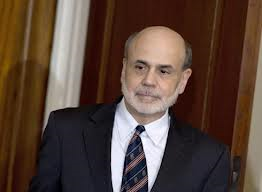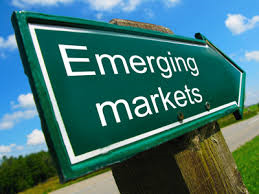 Since early last summer, the performance of emerging market equities has been disappointing at best. Investors withdrew an estimated $26 billion from emerging market equity funds last year. Today, there is a high-level of pessimism about the asset class. The downturn in emerging markets essentially started last May with what has been described as a “taper tantrum” over concerns of the impact of the U.S. Federal Reserve’s eventual tapering on emerging market economies.
Since early last summer, the performance of emerging market equities has been disappointing at best. Investors withdrew an estimated $26 billion from emerging market equity funds last year. Today, there is a high-level of pessimism about the asset class. The downturn in emerging markets essentially started last May with what has been described as a “taper tantrum” over concerns of the impact of the U.S. Federal Reserve’s eventual tapering on emerging market economies.
Many investors are concerned regarding emerging market currencies and the likely impact of the continuation of the Fed’s tapering. The big risk in emerging markets this year is focused on currencies and how they will react to the macro environment, with many investors concerned about the ability of emerging markets to deal with reduced liquidity. These concerns have unfairly impacted many investors’ long-term views of emerging markets economies. Many investors have also conveniently forgotten about the growth engines of many of these countries, specifically population growth and an increasing consumer middle class.
I’m continuing to take a longer-term and optimistic view of emerging and frontier markets. I have concluded that a repeat of the emerging market economic crises of the 1990s are unlikely. Some poorly managed countries, such as Argentina, may default again, but I am not concerned regarding contagion. Most emerging market economies are in pretty good shape despite the impact of the Fed’s tapering and their own economic and political challenges. These countries will benefit from any general global upturn in growth.
So, what should an investor do? To me it’s clear. When one looks at the longer-term prospects for emerging markets, it’s easy to conclude that many of the countries will serve as engines of global growth. Some countries immediately come to mind. These include China, Indonesia, Mexico, Poland and Brazil. The sell-off in equities in many of these countries provides a real buying opportunity for those investors who understand the impact of huge populations and the increasing middle class in many emerging markets.
What does this mean for entrepreneurs and business owners in emerging markets who are dealing with the challenges of obtaining local bank credit or having difficulty in accessing equity? For these companies, there has never been a better time to seek foreign capital from investors who are cognizant of the long-term prospects for many of these countries and who truly understand the causes and minimal long-term impact of the Feds’ tapering and its short-term effect on currencies.
Author: Jeffrey Friedland
Email: jof@friedlandcapital.com
Twitter: @jeff_friedland
Jeffrey Friedland is the author of “All Roads Lead to China: An Investor Road Map to the World’s Fastest Growing Economy,” which is available in print and Kindle editions at Amazon and other booksellers.
He is the CEO of Friedland Global Capital, a firm that assists companies in emerging and frontier markets in achieving their corporate finance objectives, and specifically accessing global equity capital.


